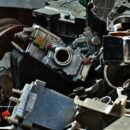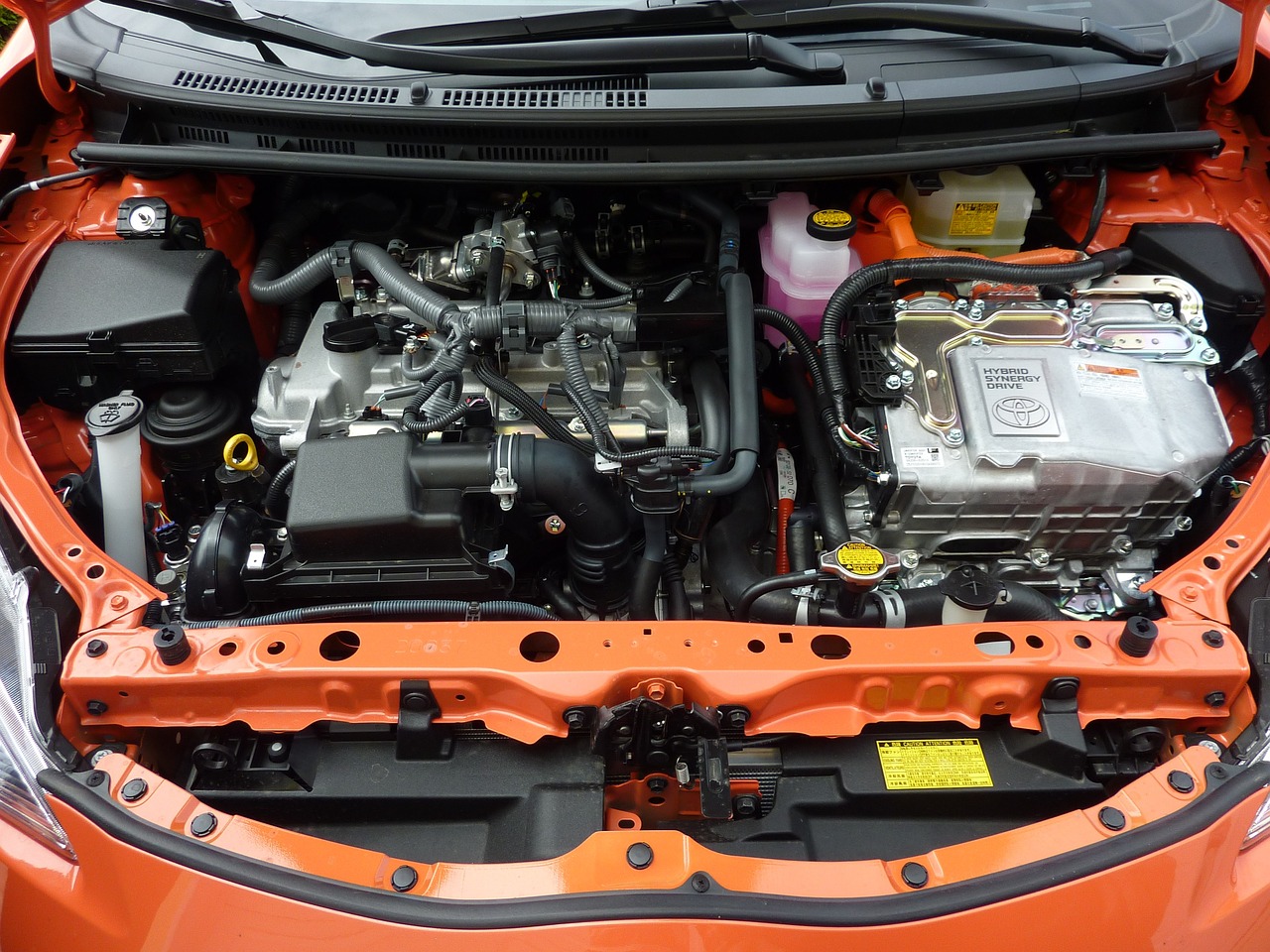Posted by admin on Oct 1, 2025 in AC Compressor, Aftermarket Parts, Cheap Used Auto Parts, Cheap Used Auto Parts NYC | Comments Off on The Hidden Value in a Wreck: Why NYC Junk Car Parts are a Smart Choice
Your car sputters to a stop on the BQE, the check engine light glaring. The mechanic’s diagnosis comes with a gut-punching quote for a new part, and that’s before NYC labor costs are even added. In a city where every dollar counts, there’s a smarter, more sustainable, and surprisingly reliable solution: the world of used auto parts.
Sourced from junk cars, these components aren’t just cheap—they represent a savvy choice for any New York car owner. Before you shell out for a brand-new part, here’s why exploring the hidden value in a wreck is a brilliant move.
1. The Unbeatable Cost Savings
This is the most compelling reason. The price difference between new and used parts can be staggering. A new alternator from the manufacturer might cost $500, while a perfectly functional one from a salvage yard could be under $100. A side mirror that costs $300 new could be found for $60.
For New Yorkers, this makes keeping an older car on the road affordable. When a single repair can cost more than the car is worth, used parts tip the scale back in favor of a cost-effective fix, saving you from the expense of a new car payment.
2. Go Green, Save Green: The Environmental Choice
Choosing a used part is one of the easiest ways to be an eco-friendly car owner. Think about the resources required to create a new car part: mining for ore, smelting metals, manufacturing, and shipping it across the globe. It’s an incredibly energy-intensive process.
Every used part you buy:
- Reduces Landfill Waste: It keeps a perfectly functional item in circulation and out of a landfill.
- Saves Energy: It completely bypasses the carbon-heavy manufacturing process.
- Conserves Raw Materials: It lessens the demand for mining new iron, aluminum, and other metals.
In a city striving for sustainability, this is a personal contribution to a circular economy—a win for your wallet and the planet.
3. OEM Quality Without the OEM Price Tag
There’s a common misconception about “junkyard parts.” The reality is that most used parts are Original Equipment Manufacturer (OEM) parts. This means they were made by the original car company (like Toyota, Ford, or BMW) and are designed for a perfect fit and optimal performance in your specific vehicle.
This is often a major advantage over brand-new, third-party “aftermarket” parts, which may not have the same quality, fit, or durability. Reputable salvage yards test major components like engines, transmissions, and alternators, and many offer 30- or 90-day warranties for peace of mind. You’re getting the quality the manufacturer intended at a fraction of the cost.
4. The Treasure Hunt for Rare and Discontinued Parts
For owners of classic, vintage, or less-common vehicles, the salvage yard isn’t a last resort—it’s the first and only resort. When a manufacturer stops producing parts for an older model, the only place to find that specific piece of chrome trim, an original radio knob, or a unique body panel is from a donor car.
The sheer volume and diversity of vehicles in the New York metropolitan area mean that local salvage yards are a treasure trove. You have a much better chance of finding that needle-in-a-haystack component right here in the city.
A Quick Buyer’s Guide
Ready to give it a try? Keep these tips in mind:
- Best Parts to Buy Used: Body panels (doors, fenders), mirrors, windows, starters, alternators, wheels, and interior components are fantastic candidates.
- Parts to Be Cautious About: Items that wear out with use, like brake pads, belts, and hoses, are generally better to buy new.
- Come Prepared: If possible, bring your old part with you to match it up exactly. Ask about the salvage yard’s warranty and return policy before you buy.
The next time your mechanic gives you bad news, remember the hidden value in the wreck. A “junkyard” is really a resource yard—a place where you can find quality, eco-friendly parts that make car ownership in NYC affordable again.
Read More
Posted by admin on Jun 1, 2025 in Aftermarket Parts, Used Auto Parts, Used Auto Parts NYC | Comments Off on Top 5 Most Valuable Parts in a Junk Car
Top 5 Most Valuable Parts in a Junk Car
When you’re wondering what to do with the old car that’s cluttering up your garage or driveway, you should know that you’re looking at a pile of money. With used car prices at all-time highs, there’s plenty of opportunities to transform an old car into cash. Junk car parts are valuable, you only need to shop around and find the best deal for your old vehicle.
Valuable scrap car parts are purchased by people and mechanics who are looking for a cost-effective alternative to after-market parts. When you’re searching for junk yards that handle auto salvage NYC businesses are more than happy to pay cash for your old vehicle, even if it’s not running.
Engine
Your car’s engine is one of the most valuable components. Depending on your vehicle’s condition, the engine may still be operable. Even if the engine doesn’t start, it’s still worth money as junk car parts.
Transmission
The transmission is underneath of your vehicle. It helps to transfer the engine’s power into usable energy for the wheels and drive train. Transmissions usually last for years, so even if your vehicle isn’t operable, the transmission may still contain valuable scrap car parts.
Catalytic Converter
If you’re curious about auto salvage, NYC businesses are always in the market for catalytic converters. These devices contain valuable precious metals, such as platinum. Often, a catalytic converter is one of the most valuable scrap car parts.
Wheels
Depending on the condition of your vehicle’s wheels, they could be worth several hundred dollars. You can easily check on the condition of your car’s wheels by looking at the tread. If there’s a good amount of rubber left on the wheels, they can be sold.
Battery
The battery is among the most valuable parts in a junk car. Even if your car doesn’t turn over, the batter may be worth money.
Posted by admin on May 1, 2025 in Aftermarket Parts, Used Auto Parts NYC | Comments Off on How Junkyards Determine the Value of Your Car
Junkyard prices
Junk car pricing NYC determine the value of a car primarily based on several factors, including:
1. Weight of the car scrap value: Junkyards often pay for cars based on weight, as metal (especially steel and aluminum) is a valuable commodity. The more a car weighs, the higher the potential payout. The vehicle is usually weighed on a scale to determine its scrap value.
2. Make, Model, and Year: Certain makes and models are more valuable than others due to their demand for parts. For example, cars with rare or in-demand parts might get a higher price, even if old or not running.
3.car salvage quotes: While junkyards mostly deal with cars in poor condition, the overall state of the car can still impact its value. A vehicle that still has usable parts, such as a functioning engine, transmission, or body panels, may be worth more.
4. Demand for Parts: Some cars may have high demand for specific parts (e.g., engines, transmissions, catalytic converters, airbags, etc.). A junkyard may offer a higher price for cars that can be dismantled for parts in high demand.
5. Location and Market Trends: The location of the junkyard can affect how much they’re willing to pay. In some areas, scrap metal prices fluctuate, which may cause the value of a car to change.
6. Environmental Factors: If the junkyard is dealing with a car that has hazardous materials (such as fluids or asbestos), there may be costs associated with safely disposing of them, which can lower the car’s value.
Junkyards typically give a price based on the car’s scrap value, but if the car has reusable parts, you may be able to negotiate a better deal if they can sell those parts individually.
Posted by admin on May 1, 2024 in AC Compressor, Aftermarket Parts, Used Auto Parts, Used Auto Parts NYC | Comments Off on Under the Hood: Exploring the Hidden World of Essential Car Components
Most of us only focus on the outer part and interior when it comes to our cars.
Read More
Posted by admin on Mar 1, 2024 in Aftermarket Parts, Used Auto Parts NYC | Comments Off on What Car Parts Do You Need in New York?
The things that make up your auto parts are the same across your car anywhere, but your car’s systems face different wear in different locales.
Read More
Posted by admin on Jun 1, 2023 in Aftermarket Parts, Cheap Used Auto Parts, Junk Car, Used Auto Parts NYC | Comments Off on A Guide to Car Electrical Parts
Car maintenance entails more than just routine check-ups and oil changes. It also necessitates a detailed understanding of the vehicle’s electrical system. This tutorial will provide an overview of the many aspects of the car’s electrical system, from brakes to batteries.
The engine is the heart of the vehicle and the most critical component of the transmission system. It is in charge of powering the car, and the electrical system supplies power to its numerous features. The hydraulic pressure created by the brake pads powers the brakes. The brake pads are linked to the wheels via the suspension. The suspension helps to lessen wheel shock when the automobile is in motion. The battery provides electricity to the car’s electrical system. It is linked to the alternator. When the vehicle is running, the alternator recharges the battery. The electricity powers the car’s many components, such as the headlights, radio, and interior lights.
The exhaust system removes the exhaust emissions from the vehicle. The air filter keeps dust, pollen, and other particles away. The air filter needs to be checked regularly to ensure that it is not clogged or dirty, as this can cause a decrease in performance and fuel economy. The clutch is the device that connects the engine to the transmission. It disengages the car when the driver presses the clutch pedal. The cooling system is in charge of keeping the car temperature within a safe range. It comprises various components, including the radiator, coolant, and fan. The radiator aids in cooling.
The interior of the car also contains various electrical system components. The steering system controls the vehicle’s direction and is powered by the steering column. The tires propel the car and are connected to the wheels through the drive belt. The drive belt allows the rotating crankshaft to drive components such as alternators. The oil lubricates the engine, while the spark plugs ignite the fuel. Spark plugs emit electricity that puts the pistons in motion. Wheel bearings are the part of the wheel assembly that supports the weight and helps the wheel turn smoothly. Over time, the wheel bearings can wear out, which can cause vibration and noise from the wheel, as well as uneven tires wear.









